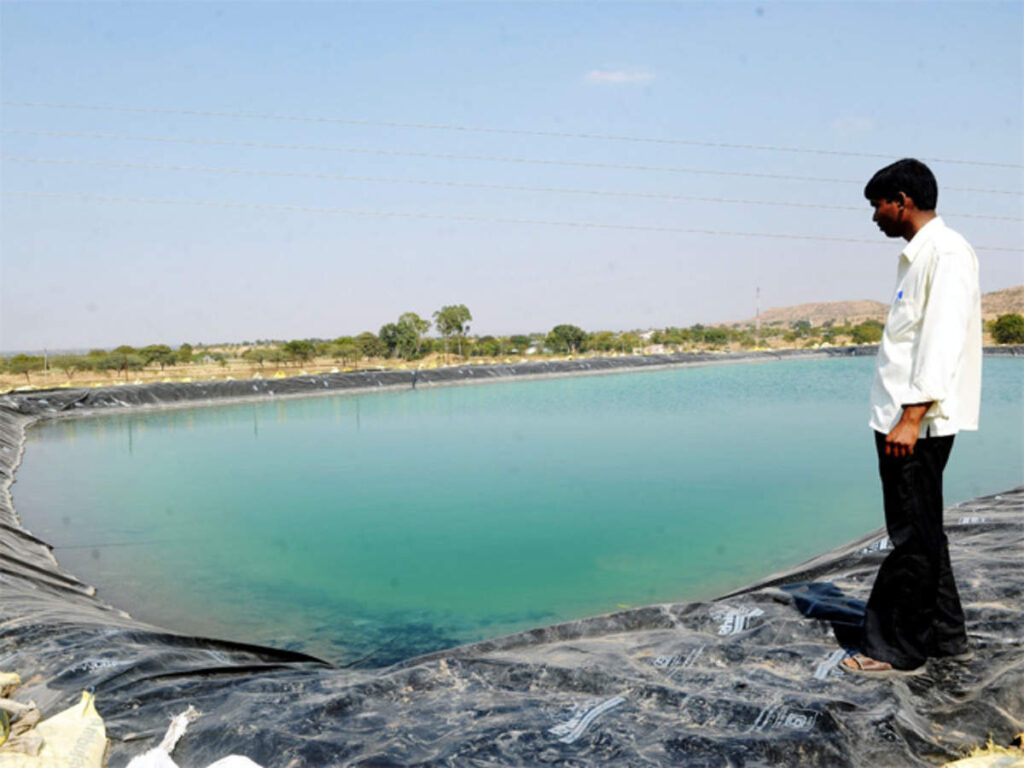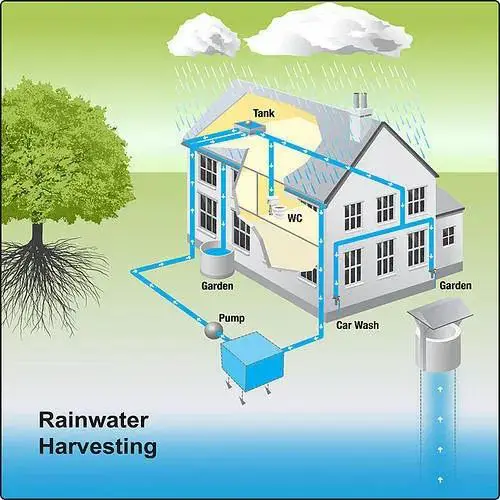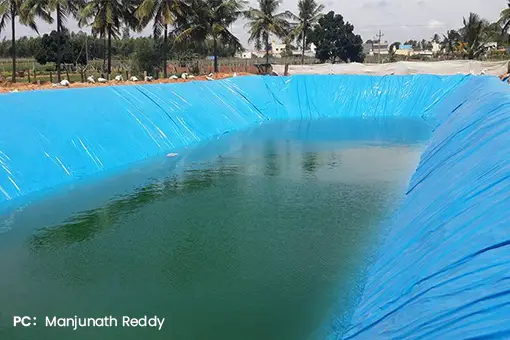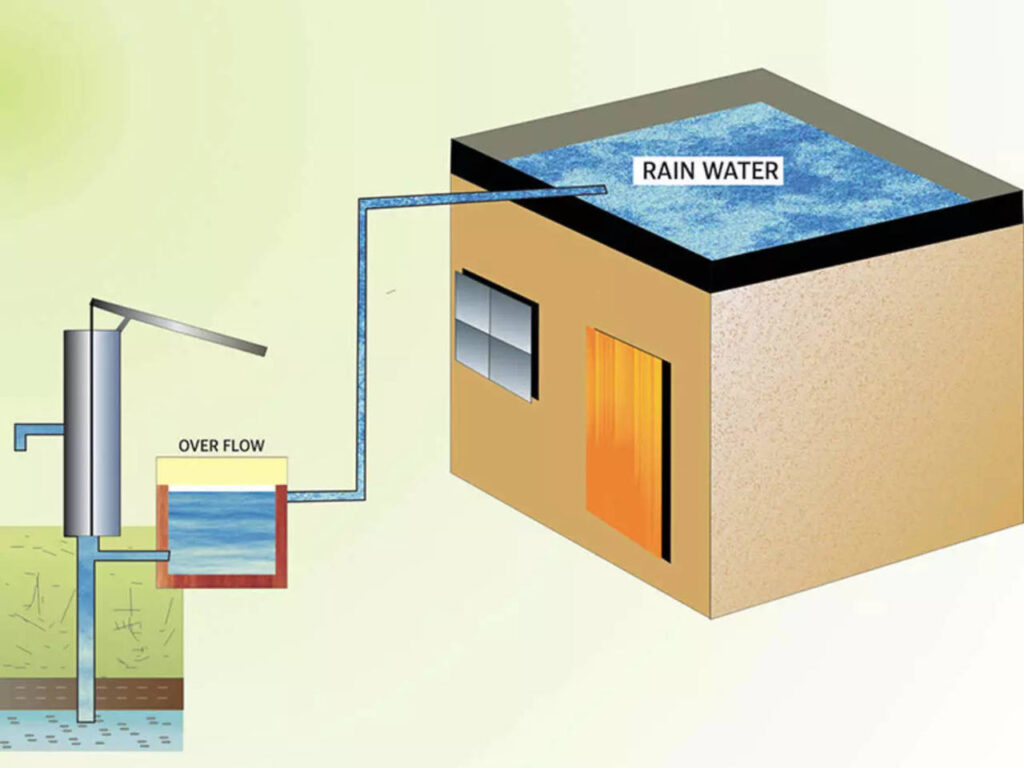Rainwater Harvesting: An Eco-Friendly Approach to Water Conservation
Table of Contents
Also Read
15 Landmarks To Visit Before You Turn 65
Rainwater Harvesting: An Eco-Friendly Approach to Water Conservation
Tabora: Exploring the Heart of Tanzania
25 South Indian Food Near Me In USA: Where Tradition Meets Taste
Ear Troubles? Learn How to Get Water Out of Your Ear

Introduction
Water scarcity is an increasingly pressing global concern, affecting numerous regions worldwide. As populations grow and climate change intensifies, traditional water sources are being depleted at an alarming rate. In such circumstances, rainwater harvesting emerges as a sustainable and practical solution to alleviate water scarcity. This article explores the concept of rainwater harvesting, its benefits, and its various methods.
Understanding Rainwater Harvesting:
Rainwater harvesting refers to the collection and storage of rainwater for future use. It involves capturing rainwater that falls on rooftops, open land, or other surfaces and channeling it into storage tanks, reservoirs, or underground structures. The collected rainwater can then be used for various purposes, such as irrigation, domestic use, and groundwater recharge.
Also Read 15 Landmarks To Visit Before You Turn 65
Benefits of Rainwater Harvesting:
1. Water Conservation: Rainwater harvesting helps conserve water resources by reducing dependence on traditional water sources, such as rivers, lakes, and underground aquifers. It is an excellent way to supplement water supply during dry periods and alleviate pressure on existing water sources.
2. Sustainable Solution: Rainwater harvesting is an environmentally friendly approach that promotes sustainability. It reduces the need for energy-intensive water treatment processes and minimizes the strain on water distribution infrastructure.
3. Cost-Effective: Implementing rainwater harvesting systems can lead to significant cost savings in the long run. By reducing reliance on municipal water supplies, households and businesses can reduce their water bills. Additionally, rainwater harvesting systems often require minimal maintenance, making them cost-effective in the long term.
4. Improved Water Quality: Rainwater is generally free from many contaminants found in other water sources. It does not contain harmful chemicals, salts, or minerals that may be present in groundwater. Rainwater harvesting systems typically include filtration and purification methods, ensuring a clean and safe water supply for various purposes.

Methods of Rainwater Harvesting:
1. Rooftop Harvesting: This method involves capturing rainwater that falls on rooftops. Gutters and downspouts collect the rainwater and direct it into storage tanks or reservoirs. It is a widely adopted technique for residential and commercial buildings.
2. Surface Runoff Harvesting: In areas with adequate open land, rainwater can be collected from paved surfaces, roads, and courtyards. The runoff is channeled into catchment areas or storage structures, preventing it from being wasted or causing flooding.
3. Rain Gardens and Bioswales: These techniques involve creating shallow depressions or vegetated areas to capture and retain rainwater. The water infiltrates into the ground, recharging groundwater aquifers and promoting plant growth.
4. Percolation Pits and Bore Wells: Suitable for areas with permeable soil, percolation pits and bore wells allow rainwater to seep into the ground and recharge the groundwater table.
Video Regarding Rain Water Harvesting In detail
Methods of Rainwater Harvesting in India
India, with its diverse climatic conditions and water scarcity issues in many regions, has been at the forefront of implementing rainwater harvesting techniques. Various methods have been developed and practiced throughout the country to harness rainwater effectively. Let’s explore some of the commonly used methods of rainwater harvesting in India:

1. Rooftop Rainwater Harvesting:
Rooftop rainwater harvesting is one of the most popular methods employed in urban and rural areas of India. It involves collecting rainwater that falls on rooftops and directing it to storage tanks or underground reservoirs. The process typically includes the following components:
a. Catchment Area: The rooftop acts as the catchment area for rainwater. It can be made of concrete, metal, or any other suitable material that allows water to flow.
b. Gutters and Downspouts: Gutters are installed along the edges of the roof to collect rainwater and channel it towards the downspouts.
c. First Flush Diverters: To ensure the removal of debris and contaminants from the initial rainfall, first flush diverters are used. They divert the initial flow of water, which might contain pollutants, away from the storage tank.
d. Filtration and Storage: Rainwater is then passed through filters, such as mesh screens, gravel filters, or sand filters, to remove impurities. The filtered water is collected in storage tanks or underground reservoirs for future use.
2. Surface Runoff Harvesting:
Surface runoff harvesting is commonly practiced in rural areas where open land is available for water collection. It involves capturing rainwater that flows over paved surfaces, roads, or fields. The following methods are commonly used:
a. Contour Bunds: Contour bunds are earthen embankments constructed along the contour lines of the landscape. They help slow down and capture rainwater runoff, allowing it to infiltrate into the ground and recharge the groundwater table.
b. Percolation Pits: Percolation pits are dug in the ground to collect rainwater runoff. These pits are filled with layers of gravel and sand, facilitating the percolation of water into the ground.
c. Check Dams: Check dams are small structures built across seasonal streams or nullahs to obstruct the flow of water. They help create small reservoirs, allowing rainwater to be stored and recharged into the ground.
3. Farm Ponds:
Farm ponds are widely used in agricultural areas to collect rainwater and store it for irrigation purposes. These ponds are excavated on farmland and filled with rainwater runoff during the monsoon season. The stored water can be utilized for irrigation during dry spells, ensuring continuous agricultural activities.
4. Recharge Wells and Bore Wells:
Recharge wells and bore wells are effective methods of rainwater harvesting in areas with low permeability soil or where groundwater levels are deep. These methods involve drilling wells and allowing rainwater to percolate through the bore or recharge well, replenishing the groundwater table.
5. Traditional Water Bodies:
Reviving and maintaining traditional water bodies, such as step wells, village ponds, and tanks, is another approach to rainwater harvesting in India. These bodies are designed to collect rainwater and store it for various purposes, including irrigation, livestock watering, and domestic use.
India has made significant progress in rainwater harvesting, recognizing its potential to address water scarcity issues. By implementing various methods such as rooftop rainwater harvesting, surface runoff harvesting, farm ponds, recharge wells, and the revival of traditional water bodies, the country has been able to conserve water, recharge groundwater, and ensure a more sustainable water future. It is crucial to continue promoting and adopting these techniques at the individual, community, and governmental
levels to mitigate water scarcity challenges and build a water-resilient India.

Hindi
भारत में वर्षा जल संग्रहण के विभिन्न तरीके
भारत में विभिन्न जलवायु स्थितियों और कई क्षेत्रों में जल संकट की समस्या के साथ, वर्षा जल संग्रहण के तकनीकों को कार्यान्वित करने में प्रथमस्थान पर रहा है। देश भर में विभिन्न तरीकों का विकसित किया गया और अमल में लाया गया है ताकि वर्षा जल को प्रभावी ढंग से उपयोगी बनाया जा सके। आइए, भारत में वर्षा जल संग्रहण के आम तरीकों का पता लगाएं:
1. छत से वर्षा जल संग्रहण:
छत से वर्षा जल संग्रहण शहरी और ग्रामीण क्षेत्रों में सबसे लोकप्रिय तकनीक है। इसमें छत पर गिरने वाला वर्षा जल एकत्र किया जाता है और इसे संग्रह कंटेनर या भूमिगत जलाशयों में पहुंचाया जाता है। इस प्रक्रिया में आमतौर पर निम्नलिखित घटक शामिल होते हैं:
ए. संग्रह क्षेत्र: छत वर्षा जल के लिए संग्रह क्षेत्र के रूप में कार्य करती है। यह सीमेंट, धातु, या किसी अन्य उपयुक्त सामग्री से बना हो सकता है जो जल को प्रवाहित होने देती है।
बी. नालियां और निचले स्तर: नालियों को छत के किनारों पर स्थापित किया जाता है ताकि वर्षा जल को एकत्र किया जा सके और इसे निचले स्तर की ओर प्रवाहित किया जा सके।
सी. पहली धुलाई के विधारक: प्राथमिक वर्षा के जल में मौजूद दूषित पदार्थों और अपशिष्टों को निकालने के लिए पहली धुलाई के विधारक का उपयोग किया जाता है। वे जल की प्रवाह को दूसरे संग्रह स्तर की ओर रखते हैं जो कि प्रदूषकों से युक्त हो सकता है।
डी. फ़िल्ट्रेशन और संग्रह: फ़िल्टर द्वारा वर्षा जल को छाना जाता है, जैसे मेश स्क्रीन, कंकड़, या रेत के फ़िल्टर, ताकि कचरे को हटाया जा सके। छाना हुआ जल संग्रह कंटेनर या भूमिगत जलाशय में एकत्र किया जाता है जिसे भविष्य में उपयोग के लिए स्टोर किया जाता है।

2. सतही वाहन जल संग्रह:
सतही वाहन जल संग्रह ग्रामीण क्षेत्रों में अवलंबित खुले भूमि के उपलब्ध होने पर आमतौर पर अमल में लाई जाती है। इसमें
पथरेले, सड़कें, या खेतों पर बहते हुए वर्षा जल को जुटाने का प्रयास किया जाता है। निम्नलिखित तरीके आमतौर पर उपयोग किए जाते हैं:
ए. समांतर खंडहर: समांतर खंडहर भूमि के समांतर रेखाओं के साथ बनाए जाते हैं। इनसे वर्षा जल के प्रवाह को धीमा करने में मदद मिलती है और इसे भूमि में प्रवाहित करके जल तालाब में एकत्र किया जा सकता है।
बी. पर्कटवायल पिट: पर्कटवायल पिट को भूमि में खुदाई करके वर्षा जल को जुटाने के लिए उपयोग किया जाता है। इन पिट्स में कंकड़ और रेत की परतें भरी जाती हैं, जो जल को भूमि में प्रवाहित करने की सुविधा प्रदान करती है।
सी. चेक बांध: चेक बांध चरमस्थानी नालियों या नल्लों के बीच बनाए जाते हैं ताकि जल का प्रवाह रोका जा सके। ये छोटे जलाशयों को बनाने में मदद करते हैं, जिससे वर्षा जल संग्रहित और भूमि में रिचार्ज किया जा सकता है।
3. खेत तालाब:
खेत तालाब को खेती क्षेत्रों में वर्षा जल
को जुटाने और इसे संग्रहित करने के लिए व्यापक रूप से उपयोग किया जाता है। इन तालाबों को खेतों पर खुदाई करके बनाया जाता है और मॉनसून के समय वर्षा जल के जरिए भर दिया जाता है। संग्रहित जल का उपयोग सूखे समय में खेती के लिए किया जा सकता है, जिससे खेती की गतिविधियों को निरंतर चलाया जा सकता है।
4. जल पुनर्जीवित कुंड और बोर कुंड:
जल पुनर्जीवित कुंड और बोर कुंड उन क्षेत्रों में जहां घनी प्रवाह्यता भूमि होती है या जहां भूजल स्तर गहरा होता है, वर्षा जल संग्रहण के प्रभावी तरीके हैं। इन तकनीकों में कुंडों और बोर कुंडों की खुदाई की जाती है और वर्षा जल को कुंड या पुनर्जीवित कुंड के माध्यम से प्रवाहित किया जाता है, जिससे भूजल स्तर की पुनर्जीवन होती है।
5. पारंपरिक जल साधन:
पारंपरिक जल साधनों की पुनर्जीवन और रखरखाव करना, जैसे कीचड़ी कुएं, गांव की तालाबें, और जलाशयों को एक और तरीके से जल संग्रह करने का
एक बहुत अच्छा तरीका है। इन पारंपरिक तकनीकों का उपयोग देश के गांवों में व्यापक रूप से किया जाता है और इससे जल संग्रहित किया गया जल खेती और जीवनाधार के लिए उपयोगी होता है।
भारत में ये तरीके सिर्फ़ वर्षा जल संग्रहण के उदाहरण हैं। आमतौर पर, स्थानीय जल संसाधनों, मौसमी और जलवायु शर्तों, और भूमि के विशेषताओं के अनुरूप तकनीकों का चयन करना महत्वपूर्ण है। वर्षा जल संग्रहण के इन तकनीकों का उपयोग करके, भारत अपनी जल संपदा को संरक्षित करके और जल संकट को कम करके समृद्ध हो सकता है। इन तकनीकों को समुचित ढंग से प्रयोग करते हुए, हम जल संरक्षण और सुस्तीयों का एक समर्पित नागरिक बन सकते हैं और साथ ही जल संबंधी समस्याओं का समाधान कर सकते हैं।

Conclusion
Rainwater harvesting presents an innovative and sustainable solution to combat water scarcity. By harnessing the power of nature, we can reduce our reliance on traditional water sources and ensure a more secure water future. Governments, communities, and individuals should promote and adopt rainwater harvesting techniques to conserve water resources, mitigate the effects of droughts, and protect the environment. Through collective efforts, we can build a water-resilient world for future generations.

Follow us on Youtube
Follow us on Facebook
Follow us on Twitter
Follow us on Instagram

